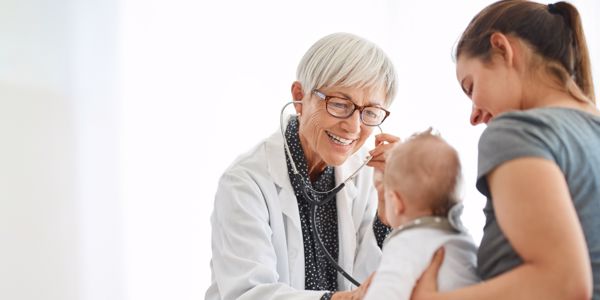Have you heard of febrile seizures before? If the answer is no, you’re not alone. Most parents haven’t heard of them before. Still, you may be surprised to hear that they affect as many as 1 in 20 children.
In this article, we’re going to let you know what they are, why they happen, who they’re most likely to happen to and what to do if your little one should experience one.
What is a Febrile Seizure?
A febrile seizure is a type of seizure caused by a spike in body temperature. There is a part of the brain called the hypothalamus, which is responsible for temperature regulation, and this part of the brain isn’t fully developed until a child turns around 4 or 5 years old. In some children, when their temperature increases it can trigger a seizure.
Febrile seizures are relatively common, occurring in 1 in 20 children, and can be very frightening for parents. It’s important to remember that they are usually harmless and almost all children make a full recovery afterwards.
Who is Most Likely to Experience a Febrile Seizure?
Febrile seizures are most common in children aged between 6 months and 3 years, but they can also happen in older children and younger babies. Some children will experience them regularly, some will have one and never have another one and some children will never experience them.
It isn’t fully understood, but there may be a genetic link at play. The chances of having a febrile seizure are slightly increased if a close family member has a history of them.
What Happens During a Febrile Seizure?
During a febrile seizure your baby or child may:
- Become very stiff
- Their arms and legs may begin to twitch
- Lose consciousness and may lose control of their bladder or bowels
- They may start foaming at the mouth, which sounds very frightening, but the saliva has nowhere to go, which is why it happens
- There may be blood in the saliva if the child has teeth and has bitten the inside of their cheek or tongue
- Their lips might start to go a bit blue
- Their eyes may roll back in their head
What To Do if Your Child Has a Febrile Seizure
A febrile seizure usually lasts for a couple of minutes. While it’s happening, there’s nothing you can do to stop the seizure from occurring, and it’s not recommended to pick children up while they are having a seizure.
The seizure should only last a few minutes, so the safest thing to do is to protect their head, time the seizure and call 999.
Once they have stopped having the seizure, put them into the recovery position while you wait for help to arrive. You can also begin to cool them down gently by getting air circulating around the room and removing layers of clothing.
There is no denying that witnessing your baby or child having a seizure can be extremely frightening and distressing as a parent, but knowing that there is a chance it could happen, and keeping in mind that they are going to be okay, will help take some of the panic out of the situation.
Febrile seizures are a complicated topic, but just one of the subjects you can learn about in a Daisy First Aid class. Our classes are designed specifically for parents and carers of babies and children, and are taught in a relaxed, fun and fear-free way. No scary stories, just practical skills and information.
Come along to one of our lovely local venues or let us come to you to teach a private class at your home with friends and family. To find your local Daisy First Aid trainer visit www.daisyfirstaid.com and pop in your postcode.
Daisy First Aid are speakers at The Baby Show, find out more information here.






